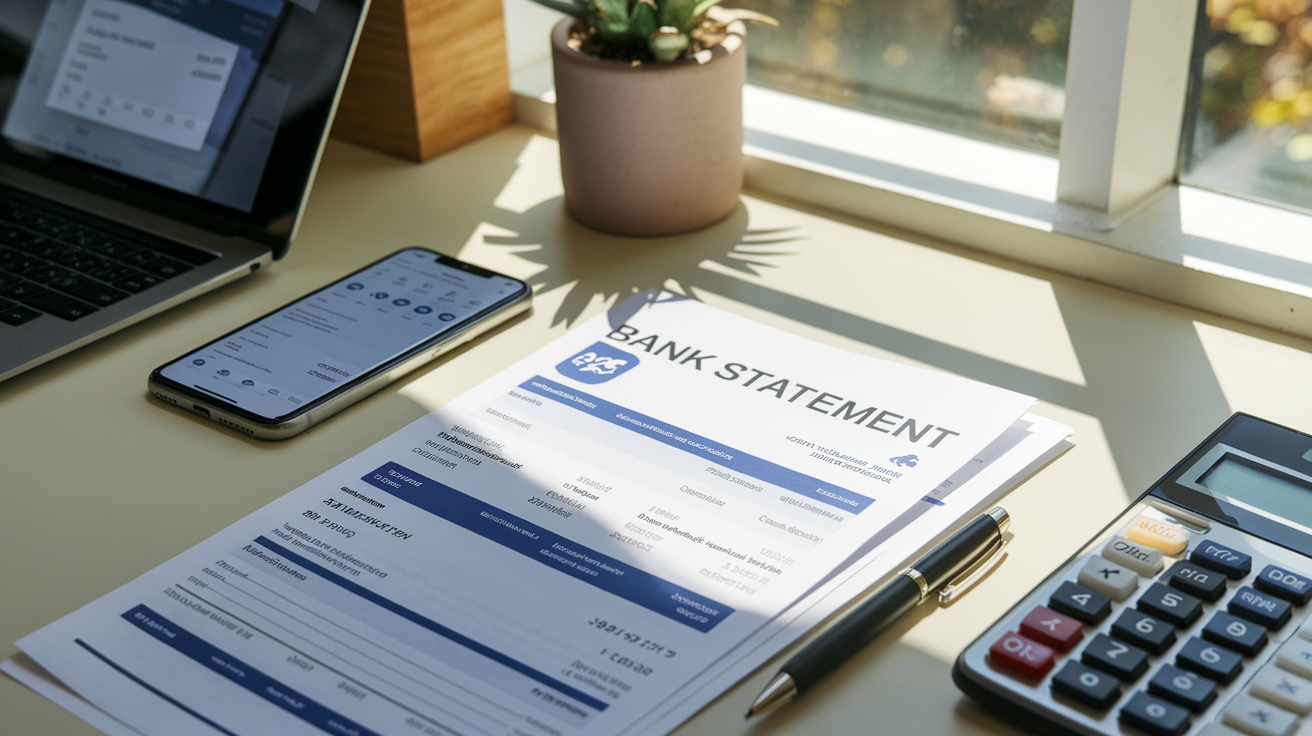
Picture this: You’re soaking up the Florida sunshine while your friends back home are shoveling snow. Sound appealing? You’re not alone. Every day, nearly 1,000 people decide on How to Become a Florida Resident, drawn by the zero income tax and year-round beach weather.
But here’s the truth most overlook – becoming a Florida resident isn’t just about forwarding your mail and changing your license plates. There’s a specific process to how to become a Florida resident that protects you legally and financially.
The good news? It’s simpler than you think. You just need to know the right steps in the right order.
And before you ask – no, visiting your timeshare twice a year doesn’t count. The rules have gotten stricter, and there’s one critical mistake that could cost you thousands.
Establish Domicile On How To Become A Florida Resident

What Is Domicile and Why It Matters
Domicile is your permanent legal home – it’s where you intend to remain indefinitely. This concept goes way beyond just owning property or staying somewhere temporarily.
Think of domicile as your home base. The place where you always return. The spot where your heart (and legal status) truly lives.
For Florida residency, establishing domicile is absolutely crucial. It’s essentially your legal declaration that “I’m a Floridian now!” Without it, you’re just visiting – even if you stay for months at a time.
Here’s the kicker – you can only have ONE domicile at a time. You can’t be a resident of Florida and New York simultaneously, no matter how much you might want those tax benefits from both places.
How to Establish Domicile in Florida
Want to make Florida your legal home? You’ll need to take specific steps:
-
File a Declaration of Domicile with your county clerk
-
Register to vote in Florida
-
Get that Florida driver’s license
-
Register your vehicles in Florida
-
Update your address on all important documents
-
File your taxes as a Florida resident
The real test comes when tax authorities question your residency. They’ll look at where you spend your time, where your doctors are, where you bank, and even where your pets stay. These “ties that bind” often reveal your true domicile.
Remember – actions speak louder than paperwork. Living like a Floridian matters more than just claiming to be one.
File a Florida Declaration of Domicile

Filing a Declaration of Domicile is like making your Florida residency official. It’s basically telling the government, “Hey, I live here now – for real.”
What Is a Declaration of Domicile?
A Declaration of Domicile is a legal document that states Florida is your primary home. Think of it as your formal breakup letter with your previous state. You’re saying Florida is where you intend to live permanently and maintain your main home.
How to File the Declaration
The process isn’t complicated, but you need to be thorough:
-
Visit your county’s Clerk of Circuit Court office
-
Complete the Declaration of Domicile form
-
Sign it in front of a notary (most clerk offices have notaries available)
-
Pay the filing fee (typically $10-$15, depending on the county)
-
Submit the form with appropriate ID
Don’t wing this one. The form requires specific information including your previous address, your new Florida address, and the date you established Florida as your home.
When Should You File?
File this document soon after moving to Florida. Many new residents file within the first 30 days, which helps establish a clear timeline of your residency change. This document becomes part of the public record and serves as strong evidence of when you officially became a Florida resident.
Remember, this is just one piece of the residency puzzle, but it’s a big one that tax authorities and courts take seriously.
Obtain a Florida Driver’s License
Getting a Florida driver’s license isn’t just another box to check—it’s actually a critical step in establishing your Florida residency. The Sunshine State requires new residents to get their Florida license within 30 days of moving here. Miss that deadline, and you’re technically driving illegally.
Visit a Florida DMV Office
You can’t do this online, folks. You need to physically show up at a local Florida Department of Highway Safety and Motor Vehicles (DHSMV) office. Bring your patience—these places aren’t exactly known for their speed.
Required Documents
The DMV wants proof you’re not making this up. Bring:
-
Your out-of-state license (they’ll take this away)
-
Two proofs of Florida residence (utility bills, lease agreements, mortgage statements)
-
Your Social Security card or a document showing your SSN
-
Proof of your identity (passport or birth certificate)
Take the Tests
Think you’re done with tests? Think again. Florida requires:
-
A vision test (can you actually see the road?)
-
A hearing test (can you hear that ambulance behind you?)
-
A written test on Florida traffic laws (only if your out-of-state license expired)
Pay the Fees
Nothing’s free, especially not in Florida. Expect to pay around $48 for a new license, plus additional fees if you need special endorsements.
Surrender Your Out-of-State License
This is the point of no return. When they hand you that shiny new Florida license, you’re officially saying goodbye to your previous state—at least as far as driving goes.
Register Your Vehicles

Got your Florida tag yet? If you’re making the Sunshine State your new home, registering your vehicle is a must-do on your residency checklist. And honestly, it’s not just a legal box to tick—it’s one of those things that screams “I’m a local now!”
Florida Vehicle Registration Requirements
Within 10 days of becoming employed, placing children in school, or establishing a home in Florida, you need to register your out-of-state vehicle. Don’t push this deadline—Florida highway patrol officers are pretty good at spotting those expired out-of-state plates.
To register, head to your local tax collector’s office with:
-
Proof of Florida insurance (this is mandatory before registration)
-
Your out-of-state title
-
Completed application for title/registration
-
Florida driver’s license
-
Proof you’ve passed a VIN inspection (they’ll check this at the DMV)
Registration Fees and Taxes
Buckle up for the costs—they’re not cheap. You’ll pay:
-
Initial registration fee: $225 (yep, it’s steep)
-
Title fee: $75.25
-
License plate fee: $28
-
Other county-specific fees
The good news? Annual renewals are much more reasonable, typically $14.50 to $32.50 depending on your vehicle’s weight.
License Plates and Renewal
Florida offers over 100 specialty license plates. Why settle for boring when you can show your personality or support your favorite cause?
Mark your calendar—your registration expires on your birthday every year. The tax collector’s office will send a reminder, but don’t count on it. Late renewals mean late fees!
Register to Vote in Florida

Registering to vote in Florida isn’t just a civic duty—it’s one of the most concrete ways to establish your Florida residency. The process is straightforward, but it carries significant weight when you’re trying to prove you’re a legitimate Sunshine State resident.
How to Register to Vote
The voter registration process in Florida requires you to:
-
Complete a Florida Voter Registration Application
-
Provide proof of Florida address (utility bill, lease agreement, etc.)
-
Show your Florida driver’s license or ID card number
-
Provide the last four digits of your Social Security number
You can register online through the Florida Department of State website, in person at your county Supervisor of Elections office, or at your local DMV when getting your Florida license.
Why Voter Registration Matters for Residency
When you register to vote in Florida, you’re making a legal declaration that Florida is your primary residence. This carries serious weight because:
-
It’s considered a formal abandonment of voting rights in your previous state
-
It creates an official government record of your Florida residency
-
It’s often one of the first documents checked by tax authorities when residency is questioned
-
Courts typically view voter registration as a strong indicator of domicile intent
The beauty of voter registration is that it’s free and relatively quick compared to other residency-establishing steps. Most people can complete the process in under 30 minutes, but the residency benefits it provides are substantial.
Open Local Bank Account

Opening a local bank account isn’t just a good financial move—it’s a crucial step in establishing Florida residency. The state looks for tangible connections when determining your residential status, and your banking relationship is a powerful piece of evidence.
Why a Florida Bank Account Matters
When you’re trying to prove you’re a Florida resident, officials want to see that you’ve put down roots. A local bank account shows you’re managing your finances from Florida, not just visiting. This small step carries significant weight when building your residency case.
How to Open Your Florida Account
Finding a bank is the easy part—Florida has plenty of options. Here’s what you’ll need:
-
Valid photo ID (your out-of-state license works initially)
-
Proof of your Florida address (lease, deed, or utility bill)
-
Your Social Security number
-
Initial deposit (varies by bank)
Many Florida banks offer special “welcome” packages for new residents. Credit unions are worth considering too—they often have better rates and fewer fees than traditional banks.
Online vs. Physical Banks
While online banks are convenient, consider starting with a physical Florida-based institution. Having a bank with local branches provides:
-
Face-to-face service when needed
-
Local check cashing without hassles
-
Additional proof of your presence in the state
Don’t forget to actually use your new account! Regular transactions at Florida locations strengthen your residency claim more than an account that sits dormant.
Notify Tax Officials

Once you’ve decided to make Florida your home, don’t forget to tell the tax folks about your move. This step is crucial because it officially marks your transition from being taxed in your old state to being taxed in Florida.
File Your Final Tax Return
You’ll need to file one last tax return in your former state. Make sure to indicate that this is your final return as a resident of that state. This tells your old state, “Hey, I’m not your taxpayer anymore.”
Some states might require additional forms to confirm your change in residency. Check with your former state’s tax department or with a tax pro to make sure you’ve got all the bases covered.
Update Your Address with the IRS
The IRS needs to know where to find you too. Fill out Form 8822 (Change of Address) and send it their way. This ensures you’ll get any tax correspondence, refunds, or notices at your new Florida address.
You can download this form directly from the IRS website. It takes about five minutes to complete, and it’s a small task that can save you big headaches down the road.
Don’t skip this step! Nothing’s worse than missing important tax documents because they’re being sent to your old place.
Remember, Florida’s lack of state income tax is probably one of the reasons you’re moving here. Make it official by dotting all your tax i’s and crossing your tax t’s.
Apply for the Florida Homestead Exemption

What is the Florida Homestead Exemption?
The Florida Homestead Exemption is basically your golden ticket to serious property tax savings. If you own property in Florida and it’s your permanent residence, you can reduce your property’s taxable value by up to $50,000.
The first $25,000 applies to all property taxes, including school district taxes. The additional $25,000 applies to non-school taxes and only on assessed values between $50,000 and $75,000.
It’s free money, folks. Well, technically it’s your money that you get to keep instead of handing over to the tax collector.
How to Apply for Homestead Exemption
Ready to claim this tax break? Here’s what you need to do:
-
Make sure you own the property as of January 1st of the tax year
-
File your application with the county property appraiser by March 1st
-
Bring proof of Florida residency (driver’s license, voter registration, etc.)
-
Provide your Social Security number and Florida residency date
-
Confirm the property is your permanent residence
You can usually apply online through your county property appraiser’s website or visit their office in person.
Don’t miss this deadline! If you’re late, you’re throwing money away until next year.
Benefits Beyond Tax Savings
The Homestead Exemption isn’t just about keeping more cash in your wallet. It also provides:
-
Protection against forced sale of your property
-
Shield from creditors in certain situations
-
Annual Save Our Homes cap limiting assessment increases to 3%
This is one of those no-brainer moves every new Florida resident should make. The application takes about 30 minutes, but saves you thousands over the years.
Update Your Estate Plan

Reviewing Your Estate Documents
Moving to Florida isn’t just about beach access and tax benefits—it affects your legacy too. Your existing will, trust, and other estate documents were likely created under your previous state’s laws. Florida’s rules are different, and ignoring this could create major headaches for your loved ones later.
Here’s what needs attention:
-
Your will – Florida has specific execution requirements and spousal rights
-
Trusts – May need amendments to comply with Florida statutes
-
Power of attorney – Florida has its own format and requirements
-
Healthcare directives – Must meet Florida standards to be valid
I’ve seen this scenario play out badly too many times. A client moves to Florida, passes away years later, and the family discovers their out-of-state documents create complicated legal issues during an already difficult time.
Finding Florida Estate Professionals
Don’t just update these documents with any attorney. Find someone who specializes in Florida estate law. They’ll know the nuances of homestead protection, elective share rules, and other Florida-specific considerations that general practitioners might miss.
Your financial advisor and tax professional should also review your overall plan. Florida’s lack of income tax and different estate tax treatment can dramatically change optimal strategies for your assets.
Smart timing matters too. Do this within your first six months as a resident while the details of your move and intentions are fresh.
Remember to Cut Ties With Your Old State

Becoming a Florida resident isn’t just about buying property and changing your address. You’ve got to cut those ties with your old state completely. Half measures won’t cut it.
Terminate Your Old State Residency
Think your old state will just let you go without a fuss? Think again. States hate losing taxpayers and will fight to keep claiming you as their own.
To make a clean break:
-
Close your old bank accounts
-
Cancel your voter registration
-
Turn in your old driver’s license
-
Surrender your vehicle registrations
-
File a final state tax return as a part-year resident
Watch Out for Domicile Audits
Your former state might come after you, especially if you’re from a high-tax state like New York or California. They conduct “domicile audits” to determine if you’re truly gone.
Red flags that trigger these audits:
-
Keeping property in your old state
-
Maintaining business ties there
-
Visiting too frequently
-
Filing conflicting documents
The 183-Day Rule Isn’t Enough
Many people think just spending 183+ days in Florida makes them residents. Wrong. You need to actually cut ties with your old state.
I’ve seen people lose residency challenges because they kept too many connections to their former state. One client maintained a country club membership in New York while claiming Florida residency—that single detail cost him thousands in back taxes.
Bottom line: Be thorough. Your old state won’t let go easily, especially if there’s tax money at stake.
How to Terminate New York State Residency

Breaking Ties with New York
So you’re making the leap from the Empire State to the Sunshine State? Smart move, but you’ve got some housekeeping to do first.
New York has some of the most aggressive tax residency rules in the country. They don’t let go easily, especially if they think you’re still enjoying their services while dodging their taxes.
To properly cut ties with New York, you need to:
-
Sell your New York property or convert it to a rental
-
Change your mailing address for ALL correspondence
-
Get a Florida driver’s license and register your vehicles there
-
Register to vote in Florida
-
Update your estate planning documents
-
File a final part-year New York tax return
-
Keep detailed records of your days in each state
The Day Count Rule
New York will still consider you a resident if you spend more than 183 days there in a year. And yes, they’re counting. Even part of a day counts as a full day in their books!
Many New Yorkers moving to Florida get tripped up here. They think occasional visits won’t matter, but New York tax auditors are infamous for their thoroughness. They’ll check your cell phone records, credit card transactions, toll records, and flight information.
Keep a detailed calendar of your whereabouts and save supporting documentation. This isn’t paranoia—it’s protection against a potential tax audit that could cost you thousands.

Becoming a Florida resident involves more than simply moving to the Sunshine State. It requires establishing domicile by filing a Declaration of Domicile, obtaining a Florida driver’s license, registering your vehicles, and registering to vote. Financial ties should also be established through local bank accounts, and tax officials must be notified of your residency change. The Florida Homestead Exemption offers valuable property tax benefits worth pursuing.
Don’t forget the crucial step of cutting ties with your previous state, especially if you’re coming from a state like New York that aggressively pursues former residents for tax purposes. Update your estate planning documents to comply with Florida law, and ensure you’re spending sufficient time in Florida to satisfy residency requirements. By following these steps systematically, you’ll successfully establish your Florida residency and enjoy the state’s tax advantages and lifestyle benefits.



